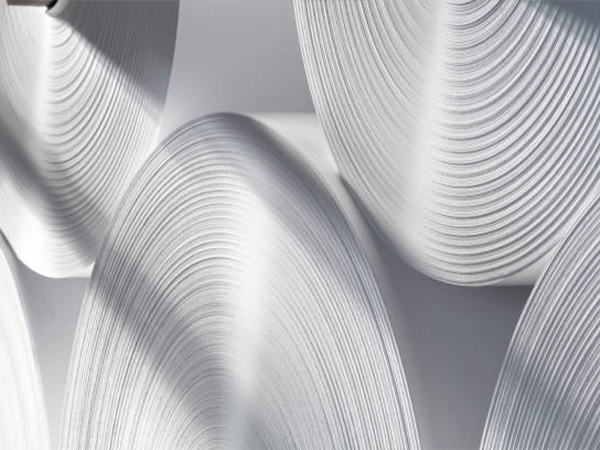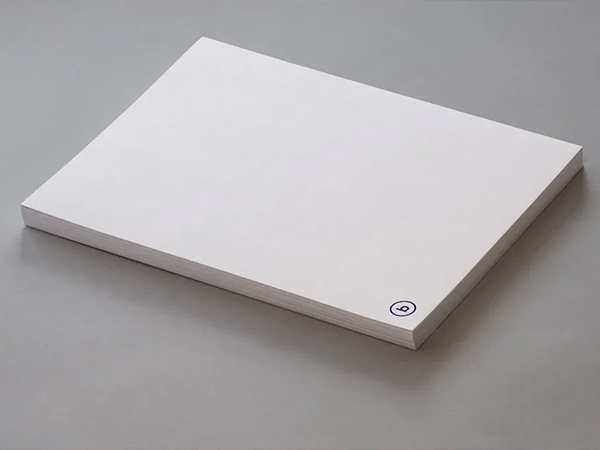In the papermaking industry, dry strength is a critical metric that determines a paper’s ability to resist mechanical failure. It encompasses tensile strength, burst strength, tear strength, and surface strength, all of which are primarily derived from hydrogen bonding between fibers. Dry strength agents are essential chemical additives that enhance fiber-to-fiber and fiber-to-filler bonding. They help optimize raw material use (e.g., increasing filler or low-cost fiber content), meet specific paper property requirements, and add value to the final product.
I. Mechanism of Dry Strength Agents
Dry strength agents work through the following key mechanisms:
- Enhancing Hydrogen Bonds:
Most dry strength agents contain functional groups like -OH and -CONH₂ that bond to the fiber surface, increasing the number and strength of hydrogen bonds. - Ionic Bonding:
Cationic dry strength agents (the most common type) carry positive charges, which bind electrostatically to negatively charged cellulose and fillers. - Covalent Bonding:
Some specialty agents (e.g., GPAM) can form stable covalent bonds with cellulose or self-crosslink during drying. - Microstructure Modification:
By improving fines retention or controlled flocculation, these agents can positively affect paper uniformity and mechanical properties.
II. Major Types of Dry Strength Agents
Dry strength agents are generally categorized as follows:
A. Natural Polymers and Modified Starches
- Cationic Starch:
Widely used. Cationic modification improves retention on fibers. Cost-effective with notable impact on strength and retention. - Anionic/Zwitterionic/Modified Starches:
Applied under specific chemical conditions or for special performance needs. - Plant Gums:
Such as cationic guar gum and locust bean gum. High molecular weight provides excellent bonding, particularly effective at improving internal bond strength. Generally used at lower dosages but are more expensive.
B. Synthetic Polymers
- Polyacrylamide (PAM) Series:
- Cationic PAM (C-PAM):
Highly efficient, with adjustable molecular weight and charge. Also used for retention and drainage. - Anionic/Zwitterionic PAM:
Used to adapt to various wet-end conditions. - Glyoxylated PAM (GPAM):
Adds temporary wet strength in addition to dry strength.
- Cationic PAM (C-PAM):
- Polyvinylamine (PVAm):
Strongly cationic, highly effective in complex wet-end environments. - Others:
Modified cellulose (CMC), polyvinyl alcohol (PVA), etc., used in specific cases, often for surface applications.
III. Usage Methods of Dry Strength Agents
A. Wet-End Addition (Mainstream)
- Typically added to the thick stock (e.g., at the inlet of the fan pump).
- Ensure full mixing and adequate reaction time; avoid high shear damage (especially for high-MW PAM).
- Coordinate the dosing order with other additives like sizing agents and retention aids.
B. Surface Sizing
- Modified starch or PVA used during size press or coating stage to improve surface properties and overall strength.
C. Spray Application
- Solution is sprayed on the forming web or pre-press section for targeted application.
D. Preparation & Dissolution
- Starch:
Must be cooked under precise temperature and time control for full gelatinization. - Synthetic Polymers:
- Powders require special dissolution systems.
- Emulsions must be activated before use.
- Liquids can be diluted directly.
E. Dosage Reference
- Dosage depends on paper grade, furnish composition, strength target, and cost considerations.
- Typical Range:
Cationic starch: 0.5–2.0%
Synthetic polymers: 0.05–0.3% (based on dry fiber)
IV. Impact of Dry Strength Agents on Paper Machine Operations
A. Effects on Formation
- Negative Impact:
Over-flocculation caused by cationic and high-MW agents can reduce formation quality—causing cloudiness, pinholes, and uneven properties. - Potential Positive Impact:
Improved retention of fine materials may enhance sheet uniformity in some cases. - Core Challenge:
Balancing strength improvement with formation quality.
B. Effects on Dewatering
- Common Issue:
Reduced dewatering efficiency, particularly during vacuum and press dehydration stages. - Causes:
- Increased fines retention leads to higher water retention.
- Floc structures and hydrated polymer chains block drainage paths.
- Consequences:
- Higher vacuum requirements
- Lower post-press dryness
- Increased steam consumption
- Possible speed reduction
- Minor Positive Effect:
Gravity drainage may slightly improve initially due to floc formation. - Core Challenge:
Managing dewatering resistance to maintain machine efficiency and energy control.
V. Key Application Considerations and System Management
1. Wet-End Chemical Balance
- Charge Control:
Monitor Zeta potential and conductivity to prevent charge reversal. Manage anionic trash effectively. - Chemical Compatibility:
Optimize dosing sequence to prevent interference with other agents like sizing and retention chemicals.
2. Preparation Quality
- Ensure full activation and proper dissolution/gelatinization of starch or polymer.
3. Mixing and Shear Management
- Select suitable addition points for uniform dispersion and avoid polymer degradation or hard-to-break flocs.
4. Retention and Drainage Strategy
- Integrate the effects of dry strength agents into wet-end optimization.
5. Microbial Control
- Use preservatives and ensure sanitation for starch solutions prone to microbial growth.
6. Viscosity Management
- Control concentration for good pumpability and mixing.






